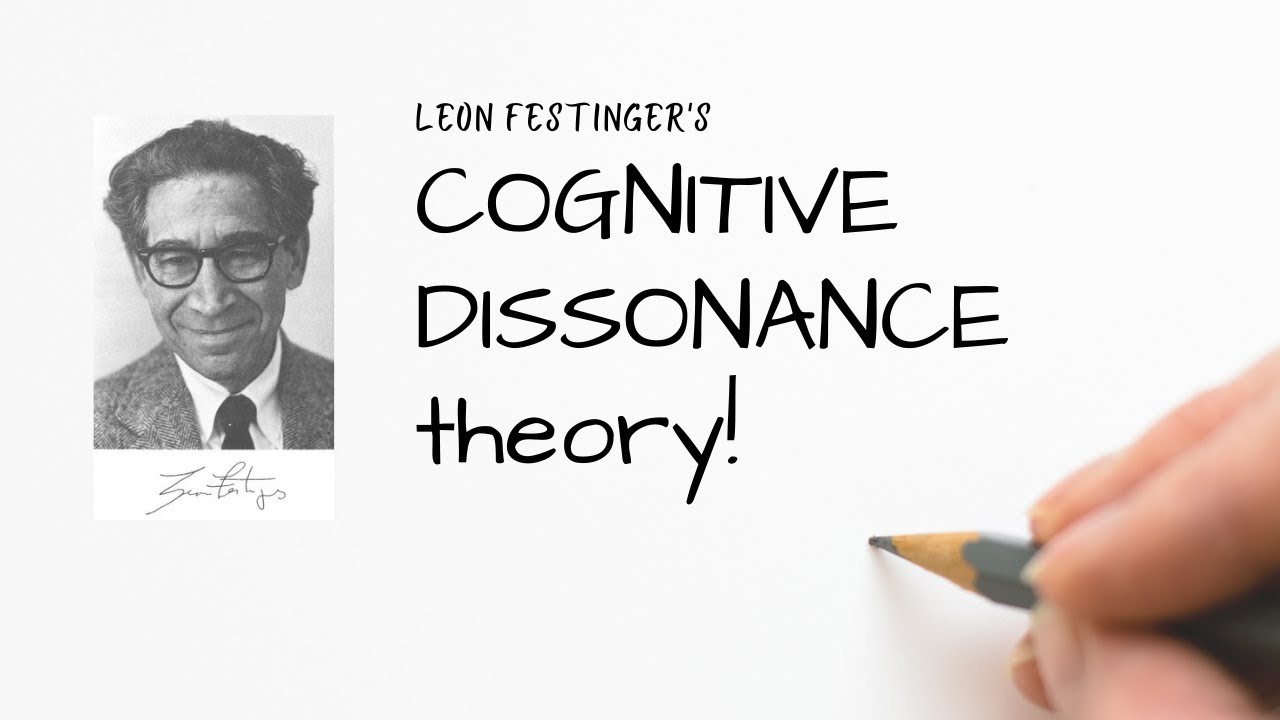Social psychologist who solved the secret of the unbearable uneasiness of contradiction: Who is Leon Festinger?
Cognitive Dissonance Theory was put forward by Leon Festinger in 1957. This theory is about understanding contradictory situations that frequently occur in human cognitive structure.

The story of the emergence of Cognitive Dissonance Theory is as follows:
In the 1950s, a UFO cult called the Seekers was obsessed with the idea that a massive flood would bring about the end of the world. Their leader, Martin, claimed that his late father, who lived in the astral dimension, had written messages to him. According to the message, spiritual beings called "guardians" living on the planets Clarion and Cerus would take them to their spaceships and save them from disaster. Another group member, nicknamed Bertha Blatsky, was also receiving messages from aliens. Martin and Blatsky were confirming each other, thus increasing their credibility. Members cut off relations with those who did not believe them, some resigned from their jobs, and some were fired. They sold their goods, thinking that they would not be needed when the apocalypse came, and they became the eyes of the savior.
Leon Festinger (8 May 1919 – 11 February 1989) was an American social psychologist who originated the theory of cognitive dissonance and social comparison theory. The rejection of the previously dominant behaviorist view of social psychology by demonstrating the inadequacy of stimulus-response conditioning accounts of human behavior is largely attributed to his theories and research. Festinger is also credited with advancing the use of laboratory experimentation in social psychology, although he simultaneously stressed the importance of studying real-life situations, a principle he practiced when personally infiltrating a doomsday cult. He is also known in social network theory for the proximity effect (or propinquity).
One day, Ms. Keech from the group announced the news that Captain Video, calling from space, would land in the backyard at 16:00. People - for some reason - took off their metal objects and waited until 17:30. The flying saucer was nowhere to be seen, so they came to the conclusion that it was a drill. Miss Keech received another message that the saucer would arrive at 1:30 am. The group waited until 3:30 and then had to disperse.
One day, the group, once again activated by a message, took out their metal items and began to wait. The day passed and the visitor still hadn't arrived. Beginning to cry, Keech received another message via automatic typing: “The little group that sat up all night spread so much light that God saved the world.” One way or another, they had “made it.” But not everyone was so optimistic. Members who had loose ties with the group felt foolish and began to leave the cult, while faithful members became more closely attached to the group.
The incident escalated, the press came, there were protests, and an arrest warrant was issued for Ms Keech and the other cult leader, Dr Armstrong (Charles Laughead).
Cognitive dissonance theory
“Cognitive dissonance”, “cognitive disconnection”, “cognitive dissonance”, “cognitive dissonance” in English… American Social Psychologist Leon Festinger, the owner of this theory, initially focused on people's efforts to achieve internal consistency. Maybe it is because consistent individuals are not considered interesting cases, it has changed direction. He scrutinized the mechanism underlying the effort for consistency.
For this purpose, Festinger infiltrated the Seekers sect with his friends; Its purpose was to observe how members would react if the prophecy did not come true; He introduced his theory to the world with his book A Theory of Cognitive Dissonance, published in 1957.
Festinger bases his hypothesis on two foundations: A person who experiences contradiction and is psychologically disturbed seeks harmony within himself; If the situation is obvious, he avoids information and situations that prove the contradiction. Cognitive dissonance theory is one of the important and influential theories in the history of social psychology; It has a wide range of applications, including consumer or voter behavior.
According to Festinger, opinions are also knowledge, the individual says and does what is "right in his own way", therefore, psychologically, opinions, beliefs, values, or attitudes are no different from knowledge. Inconsistency before the decision creates disharmony afterwards, and the tendency to rationalize the decision increases. The level of commitment also determines the extent of non-compliance. Dissonance reduction strategies include not taking responsibility for joint decisions blaming the other party and getting rid of disturbing memories by "forgetting".
Not everyone experiences cognitive dissonance to the same degree; most cases resolve on their own; and some may develop tolerance for inconsistency. Although it may be confusing at first, hypocrisy, unlike cognitive dissonance, is a voluntary behavior and does not cause discomfort in the person.
Leon Festinger was born in New York City in 1919 and later received his bachelor's degree from the City College of New York in 1939. In 1942, he earned his doctorate in psychology from Iowa State University, working with the leading social psychologist Kurt Lewin.
Festinger later taught and conducted social research at many academic institutions, including the University of Rochester, Massachusetts Institute of Technology (MIT), University of Michigan, University of Minnesota, Stanford University, and the New School.
